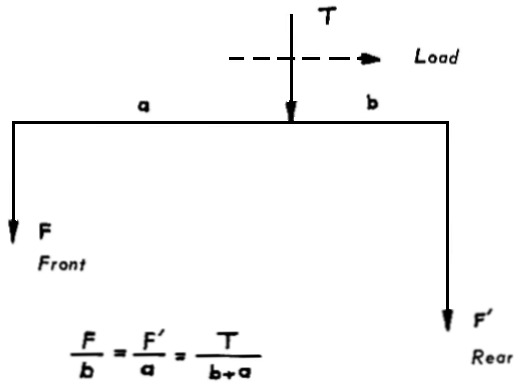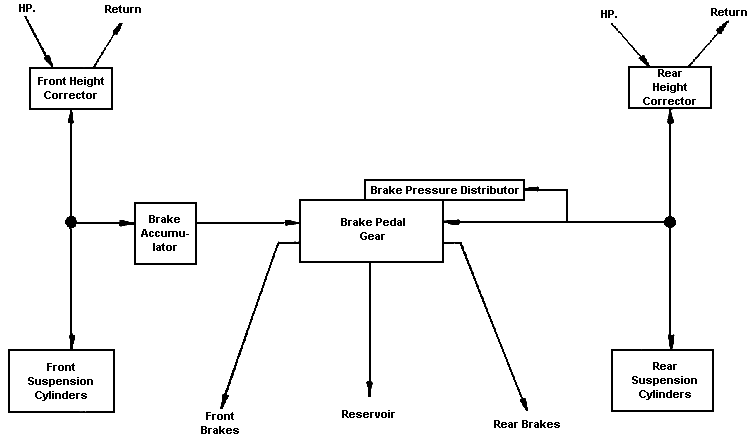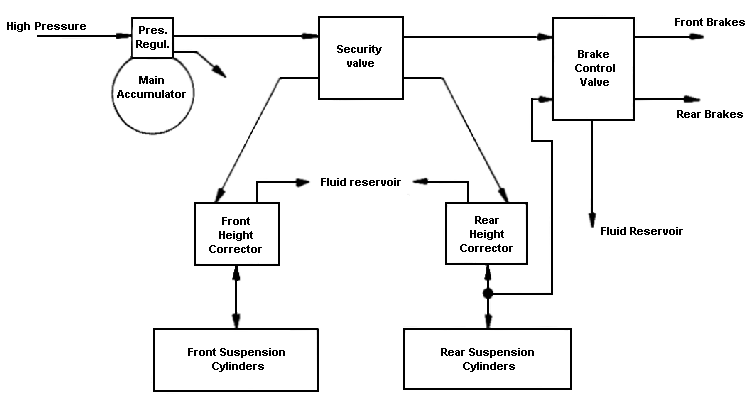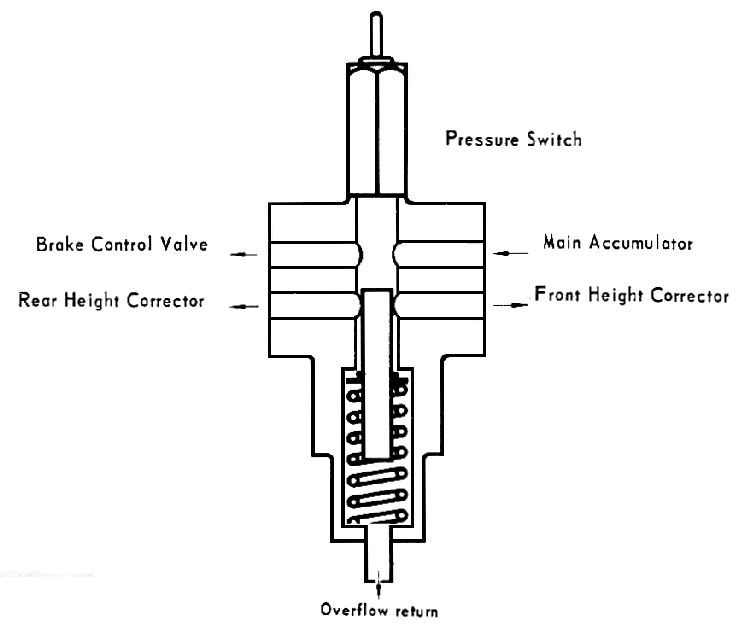|
The Brake Pressure Distributor Piston :
With a pressure of 60
bars, (870 psi), in the Distributor cylinder the force T is applied to
the middle of the Pressure Distributor Plate.
The pressures in the
front and rear circuits are therefore equal (p — p') but, because of
the methods of construction, the braking effort is greater at the front
than at the rear ;
- At the front, the
diameter of the two pistons in each caliper is 60 mm
- At the rear, the
diameters of the pistons in the wheel cylinders are : 18 mm on all
Saloons 20 mm on Estates
If the pressure in the
rear suspension increases, the piston in the Pressure Distributor moves
the rollers.
The pressure point of
the rollers and thus of the force T moves towards the rear valve.

The force F' being
greater than F, the pressure in the rear brake circuit rises (p' greater
than p) and the preponderance of braking effort at the front diminishes.
|


